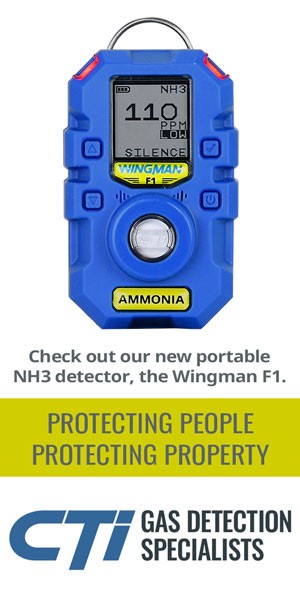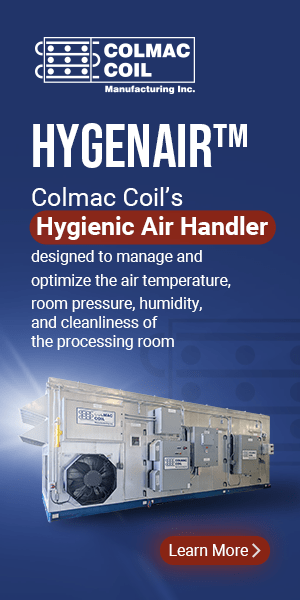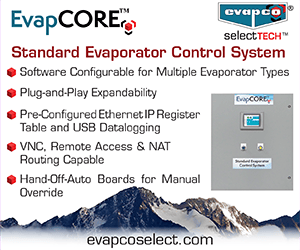IIAR Takes Two-Pronged Approach to Engage with OSHA
by Lowell Randell, IIAR Government Relations Director
With the initiation of the National Emphasis Program for Chemical Facilities (NEP) in 2009 and the nationalization of the program in late 2011, OSHA enforcement activity in the ammonia refrigeration industry has been intensifying. At least twenty five percent of all NEP inspections are occurring in ammonia refrigeration facilities and are impacting IIAR members across the United States. In response to evolving OSHA policies, IIAR is taking a two-pronged approach to engage with the agency. First, IIAR is working through OSHA Cooperative Programs to build relationships and develop resources for industry. Second, IIAR is actively engaged with OSHA Enforcement personnel to discuss current and emerging regulations and address issues of concern.OSHA Alliance
IIAR is an active partner in the Global Cold Chain Alliance (GCCA) alliance with OSHA. The Alliance is celebrating its two year anniversary in July 2012 and preparations are underway to renew the Alliance for another two year term. As the Alliance looks to the future, the Implementation Team is considering future projects and expanding partnerships. IIAR President Bruce Badger recently met with leaders from the Refrigeration Engineers and Technicians Association (RETA) to discuss the organization’s potential participation on the OSHA Alliance Implementation Team in the future. IIAR is pleased to announce that RETA will be a partner on the OSHA Alliance Implementation Team as the Alliance moves toward the future. The Alliance is excited about the addition of RETA to the Implementation Team. Representing over 5000 engineers and technicians, RETA will be an important contributor to future Alliance activities. RETA’s participation will also advance OSHA’s goal of including national worker organizations in Alliances.
Over the first two years, the Alliance has resulted in OSHA personnel participating in eight GCCA/IIAR related industry events including the 2012 IIAR annual conference in Milwaukee. These meetings have facilitated the building of relationships with OSHA personnel at the national, regional and area levels and offered the opportunity for an exchange of ideas on OSHA programs and how they impact the ammonia refrigeration industry.
In addition to OSHA participating in GCCA/IIAR events, OSHA has invited representatives of the Alliance team to participate in workshops to highlight the work of the Alliance and ammonia safety. Representatives from the Alliance will participate in a workshop at the upcoming Voluntary Protection Plan Participants Association’s meeting in August 2012. And, in October representatives from the Alliance will participate in a program at in the National Safety Council Congress and Expo to highlight the activities of the Alliance. These events represent good opportunities to share the experiences of the Alliance and discuss ways to improve ammonia safety.
Participation in the Alliance also affords IIAR the opportunity to gain access to information about evolving OSHA programs. For example, OSHA is moving forward with the implementation of the Globally Harmonized System of Chemical Classification and Labeling (GHS). The new system includes changes to safety data sheets and labeling requirements for chemicals. It also includes employee training requirements. OSHA hosted a GHS Roundtable for Alliance participants on July 18, 2012 where participants learned more about GHS and what companies need to know about being in compliance. Also through the Alliance, IIAR members were given the opportunity to participate in a webinar hosted by OSHA and the Society of Chemical Hazard Communication Alliance outlining the revised hazard communication standards and what to expect in the workplace.
The Alliance has provided opportunities to train and educate OSHA staff about ammonia refrigeration and the cold chain industry. Given the decentralized nature of OSHA, it is important that educational opportunities are available to OSHA personnel to better understand the ammonia refrigeration industry. Members have had varying experiences with OSHA inspectors and their knowledge about industrial refrigeration. In some cases, OSHA inspectors without experience in industrial refrigeration apply standards from other industries such as the petroleum industry. These education and training opportunities can help address this issue and build a better understanding of the industrial refrigeration industry and IIAR resources so that appropriate standards are applied. OSHA has appreciated these opportunities and recently highlighted a program offered through the GCCA/IIAR Alliance in OSHA’s Alliance Quarterly publication.
The Alliance has also produced a series of posters focused on ammonia safety, the latest of which addresses the National Emphasis Program for Chemical Facilities. The NEP poster is designed to increase awareness of and preparedness for, the NEP. The Alliance is actively developing other NEP related resources that can help facilities better understand the requirements of the NEP and how to be better prepared for a potential NEP inspection.
Direct Engagement with OSHA Enforcement
At the same time as IIAR works with OSHA Cooperative Programs, IIAR is also actively working with OSHA enforcement personnel to communicate concerns about experiences members are having with OSHA inspections. For example, several members have expressed concerns over OSHA’s focus on the use of torque wrenches for flanged connections. IIAR has been working directly with OSHA enforcement personnel and was successful in having a misapplied question removed from the National NEP list. Unfortunately, IIAR has received reports that some inspectors are continuing to focus on the issue of torque, even after the offending question was removed from the NEP list and the new NEP was implemented.
IIAR continues to articulate the reasons why torque wrenches should not be the required practice for ammonia refrigeration systems and that IIAR standards provide strong safeguards for flanged connections. IIAR is working to complete revisions to its standards that clarify the issue of safely making flanged connections. IIAR is also reaching out to manufacturers to help ensure there is a clear and consistent approach to addressing flanged connections. It is hoped that these clarifications will help reverse the OSHA focus on requiring torque wrenches for all flanged connections in our industry.
Critical to the success of these efforts is feedback from our membership. IIAR is actively seeking information from members about their experiences with OSHA and other regulatory agencies. Members are strongly encouraged to contact IIAR with any questions about OSHA policies and procedures or to express concerns about specific member experiences with OSHA. It is through these contacts that IIAR can better understand the challenges facing the industry and focus government affairs activities.
By working closely with both OSHA Cooperative Programs and OSHA Enforcement Program, IIAR hopes to continue building key relationships across the agency and fostering meaningful dialogue and increased understanding about the ammonia refrigeration industry. IIAR is committed to working with members, agencies and other partners to develop appropriate policies and promote safety across our industry.
EPA Risk Assessment for Ammonia
IIAR is also actively engaged with the Environmental Protection Agency on issues impacting the industrial refrigeration industry. On July 12, 2012, IIAR President Bruce Badger attended an EPA meeting regarding a proposed revision to the EPA’s Integrated Risk Information System assessment for ammonia. The draft assessment includes an estimate of the amount of ammonia a person can inhale daily throughout a lifetime that is not likely to cause harmful health effects. The draft proposes a less stringent standard than the current value for ammonia in the EPA system. The meeting provided the opportunity for public comment on a toxicological review of ammonia that is intended to be the basis for revising the ammonia risk assessment. The draft assessment is now available for public review on the EPA website. Once the public comment period is complete EPA will move to finalize changes to the ammonia risk assessment.













